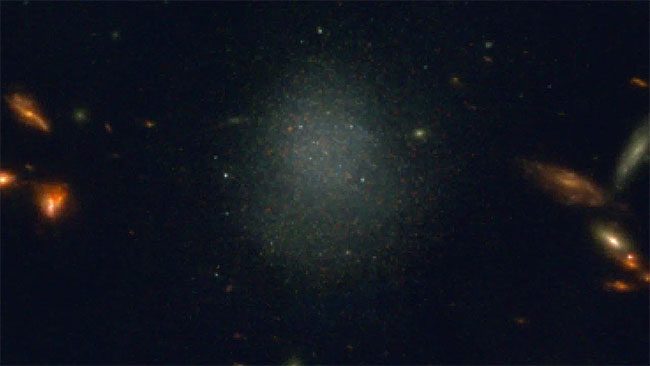Emerging like a gigantic ghost in the sky, this strange object interacts with nothing around it and overturns many astronomical theories.
According to the scientific journal PHYS, a team of scientists led by Dr. Tim Carleton from Arizona State University (USA) has discovered an object that “should not exist” among the vast datasets from the James Webb Space Telescope.

The strange object revealed by the eyes of James Webb is an extremely special galaxy – (Image: NASA/ESA/CSA)
James Webb is the most powerful space telescope in the world, developed and primarily operated by NASA, in collaboration with teams from ESA and CSA (the European and Canadian space agencies).
Thanks to its sensitive observational capabilities, it has detected several objects previously unknown to science. The strange object discovered by Dr. Carleton and his colleagues is one such example.
Analysis has identified this ghostly object as a dwarf galaxy, but it belongs to a rare super-diffuse dwarf galaxy group that has never been clearly identified before.
Dwarf galaxies—such as the Large and Small Magellanic Clouds, which are satellite galaxies of our Milky Way—typically contain fewer than 100 million stars, yet they are sufficient to form a brilliant disk of light.
However, the object appearing in the James Webb lens is merely a faint shadow, devoid of bright stars.
It has been named PEARLSDG, an oddity in the galaxy world.
Previously, astronomers believed that an isolated galaxy would continue to form its own young stars or interact with a larger galaxy. However, neither scenario applies to PEARLSDG.
Inside it is an old stellar population, indicating that this galaxy is aged. It has completely ceased new star formation and also refuses to interact with its surroundings.
As a result, it appears as a hollow, mystical world rather than a disk of light.
Distance calculations indicate that this special object is about 98 million light-years away from us, which is not too far for a galaxy.
Therefore, PEARLSDG will be an intriguing target for follow-up research, not only to learn about this unique type of galaxy but also to help astronomers explore how the evolutionary path of a galaxy can be so extraordinary.
The research on PEARLSDG has just been published in the scientific journal Astrophysical Journal Letters.


















































